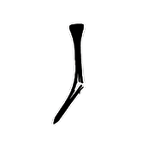Solutions for Swinging Over The Top
3 minTitleist staff member and TPI co-founder Dave Phillips has seen his share of over-the-top moves and in this video he shares the main cause - not dissociating the hips and the shoulders during the downswing. In an ideal kinematic motion, the downswing is initiated by the lower body, but in an over-the-top swing, the shoulders and hips turn back to the ball together. To fix it, Dave has two solutions.
1. For players who are physically able to turn their hips independent of their shoulders, place a head cover directly behind the ball and use it as a visual barrier. As you start your backswing, try to make the club head work over the head cover as you move the club away from the ball. As you shift and start the downswing, feel like your shoulders remain closed, chest facing behind the ball as your arms drop. This will promote more of an inside-to-out path and shots that draw.
2. For players who have difficulty dissociating the movement of the pelvis and torso, try a one-plane swing. Bend from the hips a little more at address. At the top of the backswing, feel like your lead arm is below the line of your shoulders. This flatter backswing will get your arms swinging deeper, further behind your body. From this position, although your shoulders and hips still turn back to the ball together, you'll swing the club on a flatter, more shallow plane that will approach the ball from an inside path and promote shots that draw.

























